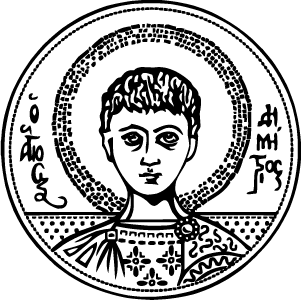Διδάσκοντες:
Faculty Instructor:
ECTS:
Κωδικός Μαθήματος:
Code:
Κύκλος / Επίπεδο:
Cycle / Level:
Υποχρεωτικό / Επιλογής:
Compulsory / Optional:
Περίοδος Διδασκαλίας:
Teaching Period:
Περιεχόμενο Μαθήματος:
Course Content:
The course comprises two main parts. In the first place, an introduction to the methodology and the basic characteristics of comparative politics as they have developed today. In this context, students shall become familiar with the basic concepts related to the different types of political systems (democratic or authoritarian systems) the functioning of a political system (the concepts of sovereignty, authority, political representation), the main elements of a political system (such as the relationship between the government and the people, the concept of separation of powers and the party party and electoral systems). In a second part, the course examines the main political systems of Western Europe and the USA. In this context, it analyzes the various types of political systems by reference to one or more countries: it thus examines the U.S. political system as a model of the presidential system, the political system of Britain as a model of parliamentary system and political system of France model of the semi-presidential one. It also considers the political systems in other major European countries (such as Germany, Italy and Spain). This second section, although focusing on the current institutional relationships between the political structures of modern states, does not only analyze the current situation of each country’s political system; it also examines the reasons for the way the system has been shaped as it is – with emphasis on the historical context and the social and economic motives that led to the formulation of these specific systems.
The course structure is as follows:
1. Background and conceptual framework of comparative politics – what do we compare, why we compare. What is comparative governance.
2. Types and categories of political systems.
3. Public Policies. Concepts and elements of state policies today.
4. A history of European political systems. The concept of separation of powers. Parliamentarianism and democracy.
5. The “pure” parliamentarianism: the British political system. History, institutions, actors, society. The role of the “custom”.
6. The “tempered” parliamentarianism: the case if the German political system. History, institutions, actors, society. The role of the Chancellor.
7. The presidential system: History, institutions, actors, society in the United States.
8. Efforts to reconcile the presidential and parliamentary systems. The French semi-presidential system. The role of the President of the Republic.
9. Other European political systems: Italy. From multipartism to the bipolar system.
10. Other European political systems: Spain. History, institutions, actors, society. Regionalism and federalism.
11. Other European political systems: The multiparty systems of Benelux and the Nordic countries – the tradition of coalition governments.
12. Other European political systems. The political systems in Eastern Europe.
13. Review.
Μαθησιακά Αποτελέσματα:
Learning Outcomes:
Upon successful completion of the course, the students will be able to:
Understand the basic concepts of comparing political systems, to relate these concepts to specific political characteristics and to distinguish the essential from the secondary elements of a political system
Have the ability to compare the key elements of political systems
Have a comprehensive overview of the basic political systems of Western Europe as well as a good knowledge of the main causes for their formation


 Αριστοτέλειο Πανεπιστήμιο Θεσσαλονίκης
Αριστοτέλειο Πανεπιστήμιο Θεσσαλονίκης